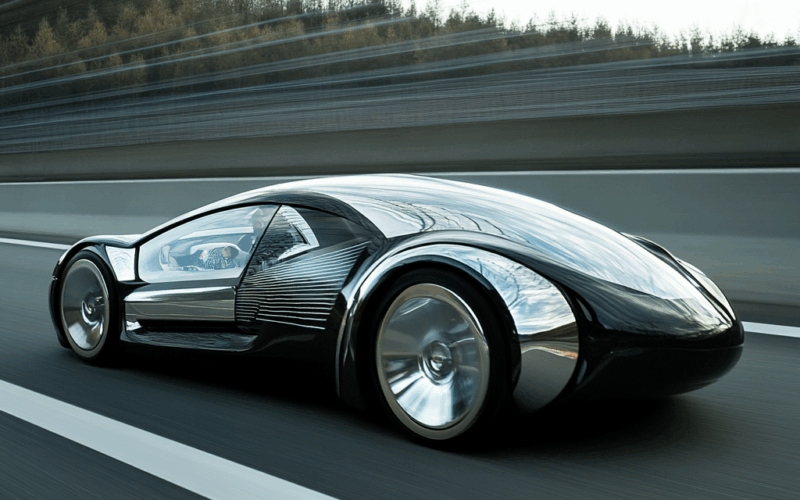Finding ourselves on the threshold of a new decade, humanity is increasingly rethinking the importance of transport in our lives – not as a convenience, but as an element of a global system whereecology, technology and personal freedoms. Transition from using traditional fuels toalternative energy sourceshas ceased to be a discourse of the future — it is already part of everyday reality. Electric cars, hydrogen installations, hybrid platforms and infrastructure for them are leaving the status of an experiment and becoming an everyday norm in the largest megacities of the world.
New mobility as a reflection of technological progress
Modern personal transport solutions increasingly rely on developments in the IT, microelectronics and telecommunications sectors. Electric vehicles equipped with autonomous driving systems, touch interfaces and constant internet connection are becoming more than just a means of transportation. They are intelligent platforms capable ofanalyze routes, prevent traffic jams and optimize energy consumption.
Influence technologies is also felt in mass demand. Startups are emerging that offer modular forms of transport that connect to the user’s smart home or work ecosystem. More and more oftennot only power and speed are taken into account, but also software, the ability to integrate with gadgets, and the security of the digital environment. Personal transport becomes an extension of the digital personality — and at the same time a reflection of the attitude toward a sustainable future.
Hydrocarbon phasing out: economic and environmental motivations
Transition toalternative energy sources is determined not only by technical capabilities, but also by a number of key motives:
- Economic feasibility: every yearThe cost of owning an electric vehicle is falling, thanks to reduced battery prices and preferential tax policies.
- The threat of climate change: CO₂ and other greenhouse gas emissions from transport —one of the main factors of global warming.
- Global dependence on oil: The shift away from fuel reduces economic risks associated with oil price fluctuations and international conflicts.
- Legislative pressure: many countries are introducing bans on sales of internal combustion engine cars by 2030–2040.
- Social image: owning an eco-friendly vehicle is becominga prestigious element of lifestyle.
All these factors reinforce each other, forming a stable trend. It is already manifested not only in large metropolitan areas, but also in medium-sized cities, especially in the presence ofcompetent state support and developed infrastructure.
Urban environment and personal transport: how infrastructure is changing
The revolution in transport cannot take place in isolation from urbanism. Space cities are adapting to new forms of transportation: parking zones for cars with internal combustion engines are being reduced, the number of charging stations is growing, and special lanes for electric scooters and bicycles are appearing. The infrastructure of the future requiresnew design logic, where not only cars but also microtransport, mobile hubs and multimodal transfers become a priority.
An important direction of development is becomingintegration of personal transport into the public transport system. Electric carsharing, flexible tariffs for electric bikes and even electric buses for short distances are becoming an element of a unified urban mobility. This erases the boundary between “private” and “public” transport, turning travel intoconvenient and economical service, and not the burden of ownership.
Electrification and autonomy: the synergy of the future
If electric traction– this is the replacement of one energy source with another, then autonomous control –new level of car perception. It is the synergy of these two vectors that produces an incredible result: machines that cananalyze the traffic situation, plan a route and avoid traffic jams, are becoming an integral part of the smart city. Electric cars with AI on board are no longer science fiction, but the future that is being built today.
This type of transport requiresreviewing safety standards, liability and urban zoning. At the same time, it opens up opportunities for people with limited mobility, reduces the risk of accidents and optimizes energy consumption. The smarter the car becomes, the more it fits into the general rhythm of the digital world, where comfort, ecology and efficiencybecome one.
Public Expectations and Legal Challenges: The Path to Sustainability
Society is becoming increasingly demanding not only of producers, but also ofstates that formulate transport policy. Support for electric transport and infrastructure requires more than just declarations,concrete steps: subsidies, tax breaks, the introduction of standards and obligations to reduce emissions. Along with this, the demand fordata transparency, protection from cyber threats, creation of a single legal framework for AI cars.
In addition, new ones are being formed needs and end users. People expect thateco-friendly transport will not only be useful but also convenient. Easy charging, accessible services and quality assurance become the basis of trust. The path to mass transition is not only about technology, but alsoflexible, supportive environment, ready for change.
The topic of moving away from fuel in personal mobility is not just a technological transformation, it ischange of thinkingWe live in an era where going hydrocarbon-free is not a loss of convenience, but a step toward freedom, sustainability, and responsibility.Every city, every family, every person becomes a participant in this paradigm shift., even if he doesn’t realize it yet. What yesterday seemed like the choice of enthusiasts, today becomes the standard, and tomorrow – the only possible option.
This is why the issues of charging infrastructure, legal framework and digital compatibility are becoming so important. Electric vehicles, autonomous capsules, hydrogen platforms – all this is already shaping the contours of a new reality in whichConvenience, ecology and intelligence are combined into a single transportation system. No fuel, no noise, no emissions – but with great meaning.
The main difficulties areinsufficient development of charging infrastructure, high cost of new technologies and inertia of the legislative framework, which does not always keep up with technical solutions.
The sphere of internal combustion engine service (repair, production of spare parts, refueling) will beto shrink, but at the same time new directions will open up –AI service and programming, battery development, charging infrastructure management and logistics.

